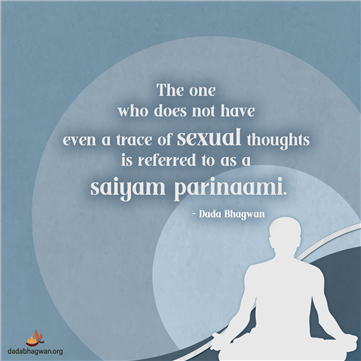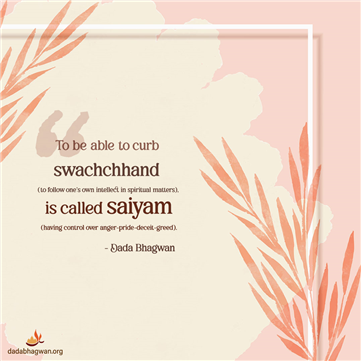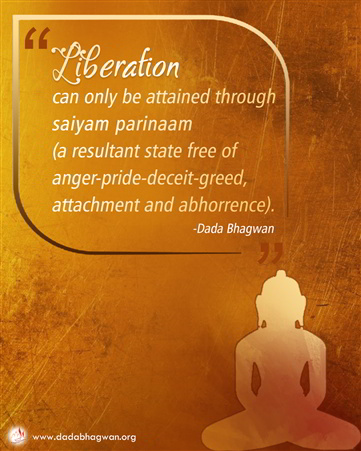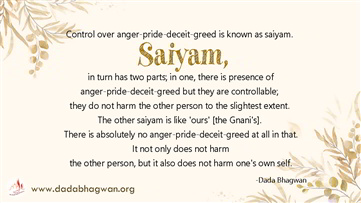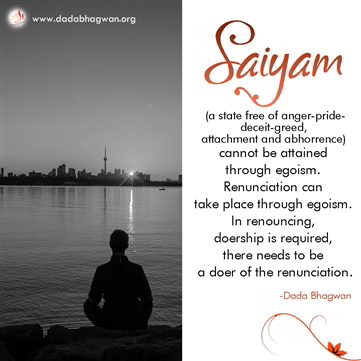Spiritual Quotes On saiyam
The One who no longer has any himsak bhaav (the intent to harm or hurt anyone) is called saiyami (a person with self-restraint). When himsak bhaav does not arise even amidst anger, pride, deceit and greed, that is the definition of [true] saiyam (self-restraint). A saiyami will attain moksha (ultimate liberation).
Param Pujya Dada BhagwanIt is called saiyam [inner control] when anger-pride-deceit-greed are under control. However those who renounce are not called saiyami [those with inner control]; they are called ‘tyagi’, one who renounces worldly life.
Param Pujya Dada BhagwanWhen worldly people come into a set discipine (niyam), they are known as yamdhari (one who upholds self restraint). From the moment one holds onto any set discipline, he is considered to have come into self restraint (yam). The tyaagis (ones who have renounced worldly life) are considered to be niyami (one who follows a set discipline) whereas the Gnanis are considered saiyami (One who has no anger-pride-deceit-greed, attachment and abhorrence).
Param Pujya Dada BhagwanSaiyam parinaam (A resultant state that is free of anger-pride-deceit-greed, attachment and abhorrence) can only arise whilst living in worldly life. Saiyam (a state free of anger-pride-deceit-greed, attachment and abhorrence) cannot arise without worldly life. When one comes into saiyam, there is safe-side of worldly life too!
Param Pujya Dada Bhagwansubscribe your email for our latest news and events







